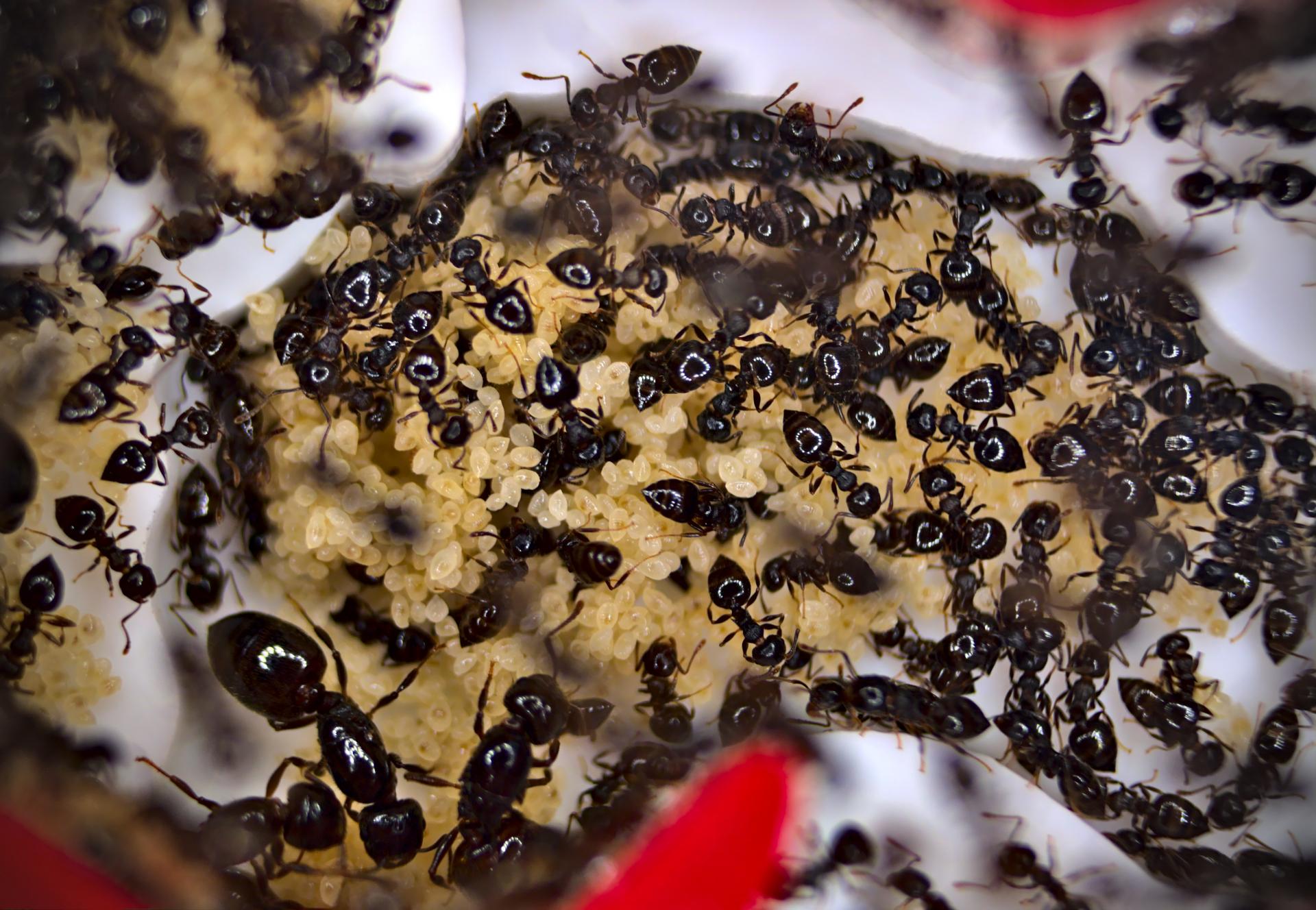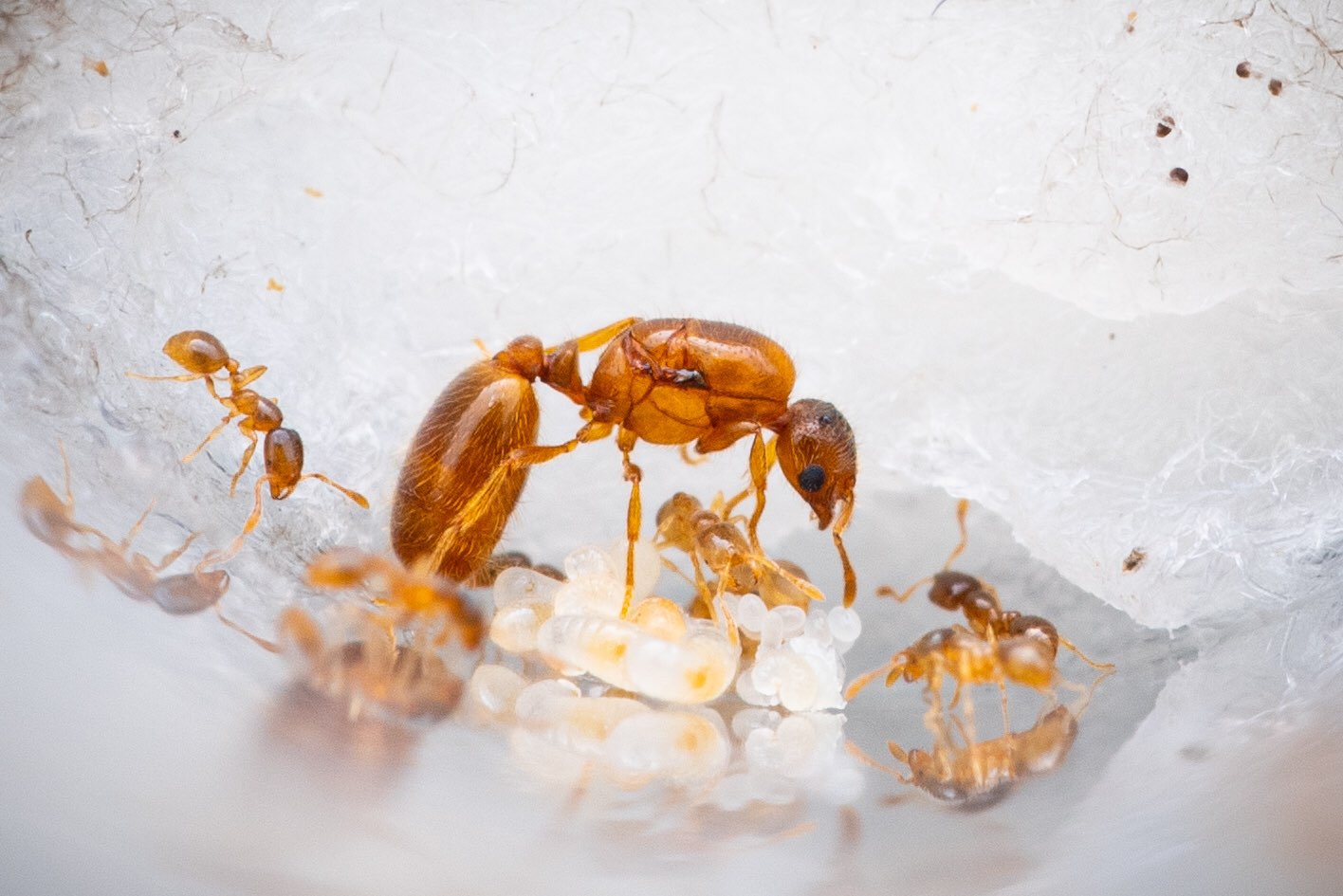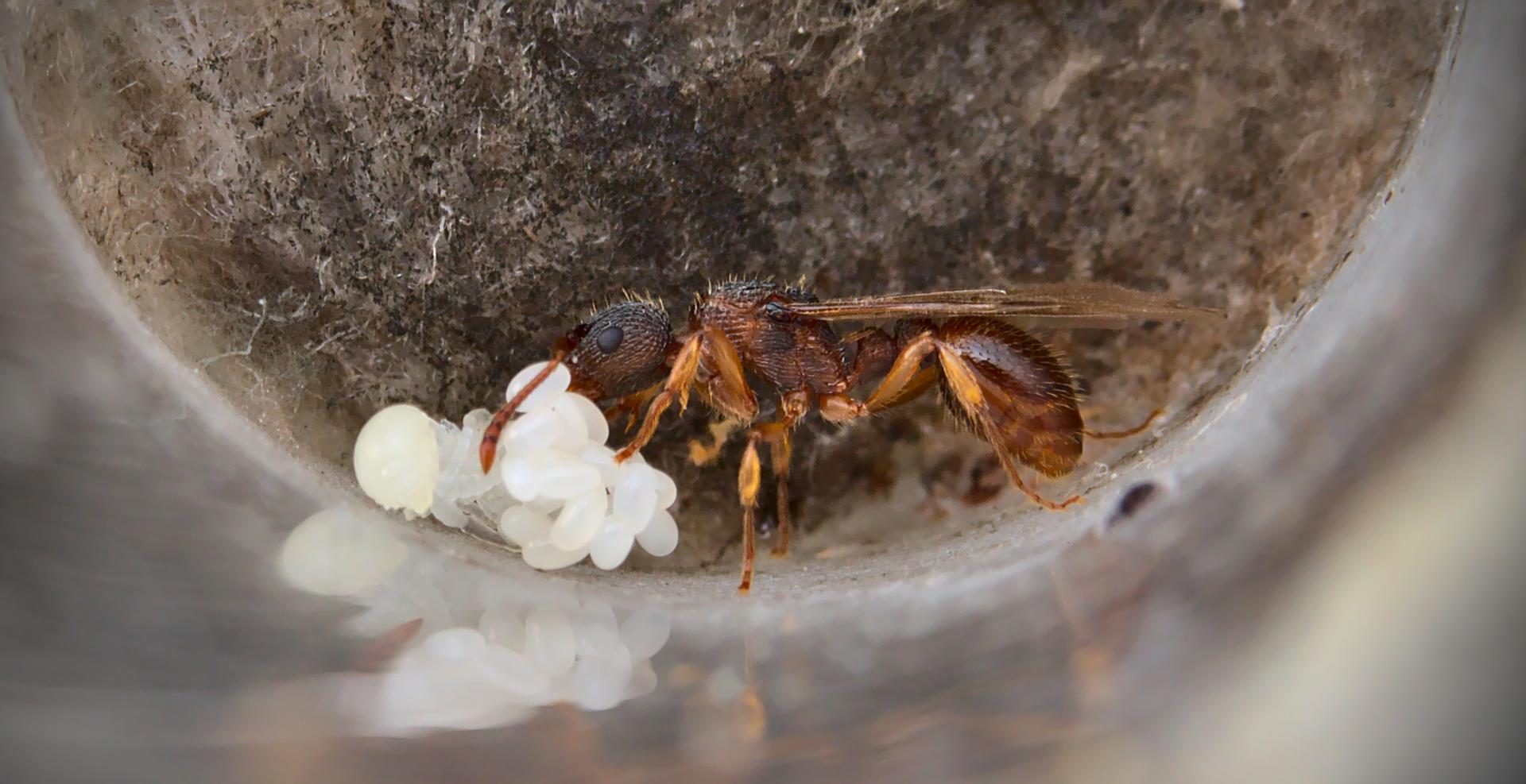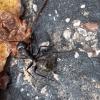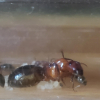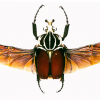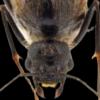Below is a quick beginner-level hibernation guide I made recently, it is also available at buckeyemyrmecology.com.
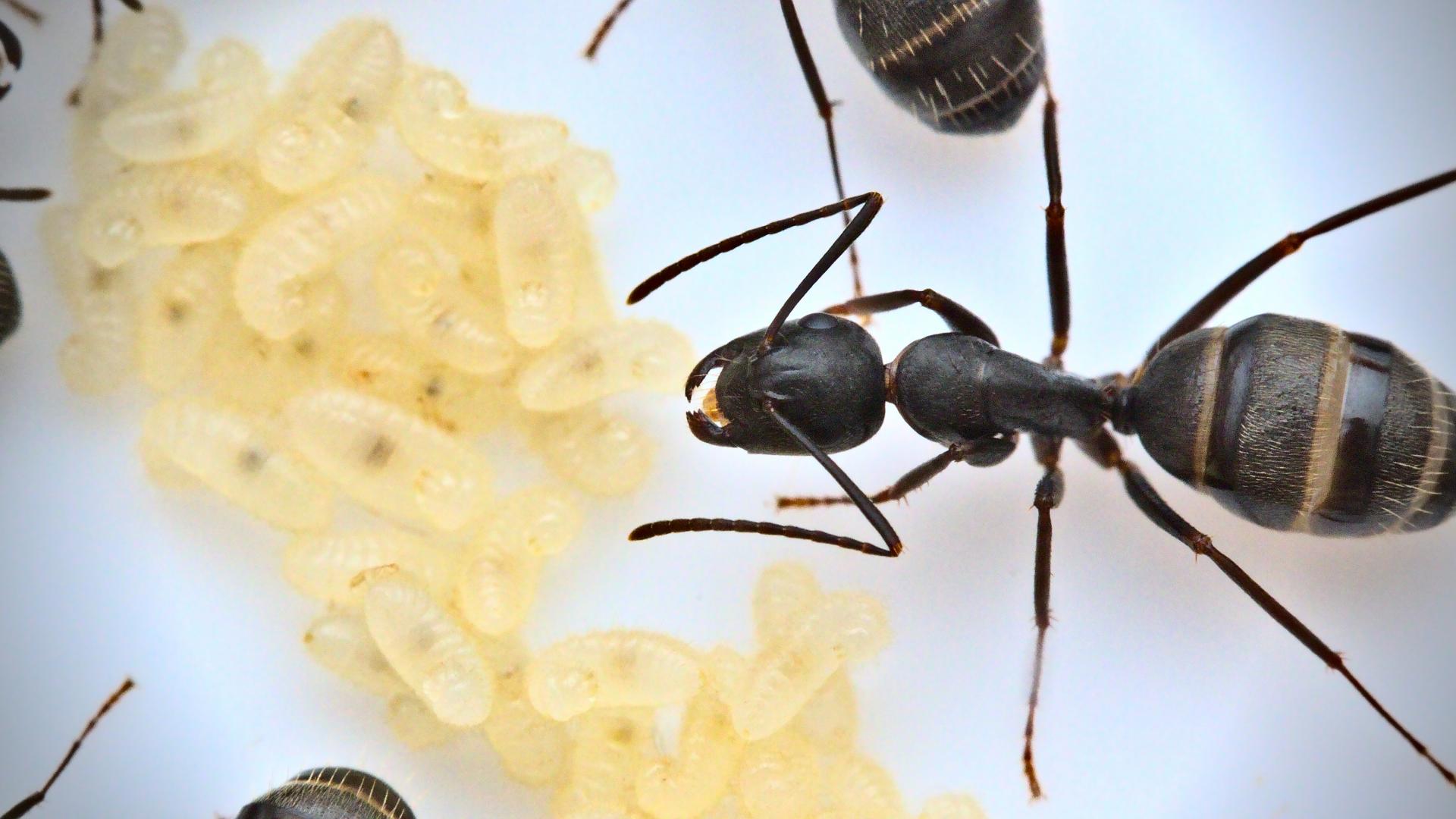
A Camponotus pennsylvanicus (Formicinae) worker tends to larvae in a Log Nest Medium as they prepare for diapause.
What is Diapause?
Diapause, often referred to as hibernation, is how ants in temperate climates survive the cold winter months. Typically, this occurs from November to March in captivity, but it can be longer or shorter depending on the species. In some cases, they will curl up and appear to be dead, while many species will simply stand still and remain motionless. During this time, your ants won’t need any sources of food, not even carbs! However, they will still need a water source in order to maintain nest humidity and prevent desiccation. In fact, desiccation (drying out) is one of the most common ways for ant colonies to die during diapause, so it is important that you occasionally check on your ants to make sure that they still have water.
Whether an ant colony needs diapause can depend on the species, colony age, and even where they are collected from! If you bought your ant colony from us, whether it will need hibernation or not is mentioned on the product page. However, if you collected the colony/queen on your own, it can be difficult to know whether or not your colony needs to diapause. The first step to this is to find out what species your colony is. A good rule of thumb to follow is that Formicine species will need diapause, while Myrmicines may not need to.
While essentially all Formicinae in temperate regions need diapause, Myrmicinae is another story. Many Myrmicinae species do not require diapause, while other species can be dependent on the specific colony, colony age, and location.
To determine whether your Myrmicine colony requires diapause, you will need to observe them to see if they display certain characteristics, or a lack of, which may mean they are ready for diapause. To start, what is the colony’s foraging activity, and overall activity, like? If your colony is preparing for diapause, they may begin refusing protein, and fill up on carbs. They may also simply stop foraging altogether. Next, what does the colony’s brood look like? Is it of varying sizes and types, with lots of eggs, larvae, and pupae? Or is it all the same size, and only consisting of larvae? If all of your colony’s brood is small (2nd instar) larvae, as pictured below, they are likely ready for diapause.
A Crematogaster lineolata colony with thousands of 2nd instar larvae that are ready for diapause.
However, there are also some Myrmicinae species that typically never require diapause, no matter colony age or location. One example of this is Solenopsis Molesta, which is pictured below.
An incipient Solenopsis molesta (Myrmicinae) colony. This species does not need to diapause. Photo courtesy of Max Hike.
Even still, some Myrmicinae species diapause requirements will vary with colony age. For example, many Myrmica species do not require diapause during their first, and sometimes even second, year.
A Myrmica sp. queen cares for her developing brood. This genus typically does not require diapause during their first year.
Over the years, many methods have been developed for putting captive ant colonies through diapause. The one we have found most useful at Buckeye Myrmecology is the Fridge/Wine Cooler Method.To diapause your ants using this method, first make sure your ants have enough water and a clean test tube/nest. If they are running out of water, we recommend you move them into a new test tube prior to diapause. Next, you’ll need a small box with a lid, like a shoebox, and some sort of insulating material, such as paper towels or a hand towel. After you have these, place a layer of insulating material on the bottom of the box, below where the ants will go. Then, place your colony’s test tube/nest into the box, and place the rest of your insulating material on top of and on the sides of your ant setup. Make sure to leave some room for air in the box, since air is a great insulator! Finally, close your box and place it into your fridge/wine cooler. If you are using a wine cooler, we recommend placing it on the highest temperature setting, however this is not mandatory. For those with ant colonies collected in warm regions like Florida and the Southwest, you may need to prop the door of your wine cooler open so that your colonies don’t get too cold, or even diapause them at room temperature.
An important note for this method, DO NOT PLACE YOUR ANTS IN THE FREEZER, THIS WILL KILL THEM. While temperatures in the wild may dip below freezing for periods of time, many ant species will prepare for this by building up a natural antifreeze as it gets colder over months. In captivity, ants do not have time to build up this antifreeze, so they must be kept above freezing temperatures during diapause. Other ant species are never exposed to these freezing temperatures naturally, as they dig deeper before diapause and are insulated by the ground above them.
During diapause, you should check on your colony at least once every 3 weeks if they are in a test tube, to ensure that they still have water, and have not experienced any floods or other issues. If your colony is in a nest, you should check on and refill their water every 2 weeks.
Once 3-5 months have passed from when you placed your ant colony into diapause, you can take them out of diapause. To do this, remove them from your fridge/wine cooler, but leave them in their box for a few hours. This will allow them to warm up gradually, and in the case of test tubes, reduce the chances of flooding. Test tube floods can be caused by the rapid temperature change as your test tube setup warms up after exiting diapause. To further prevent test tube floods as your ants warm up, place their test tube at an angle, so that the cotton is above the water. If a flood does occur, you will need to move your ants into a new tube to prevent them from drowning.
That's about it! Let my know if I missed any formatting mistakes, and good luck to anyone who is currently hibernating colonies ![]() !
!





